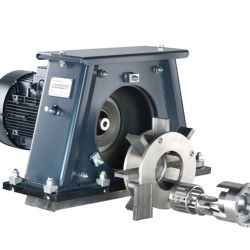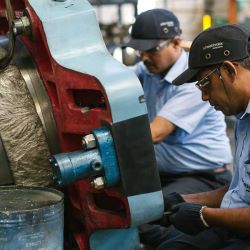Turbine Components
Wheelabrator Impact shot peens many turbine engine components. Components which often require the shot peen process include: spinners, drums, shafts, blades and stators.
Due to the delicacy and thin section of turbine blades, glass bead or ceramic bead peening is often used to reduce the risk of distorting these critical areas. However, the root of the blade is more substantial and more highly stressed allowing higher intensities to be imparted. In this case the higher intensities are usually achieved with the use of a heavier steel shot as is also often the case with other more substantial turbine components.
The range of machines available at Wheelabrator Impact to process the many complex turbine components requiring the shot peening process is extensive, ensuring capabilities and capacity are matched to customers’ requirements.
Spinners, blades and shafts often require complex masking and tooling which is regularly designed and manufactured by Wheelabrator Impact.
Aerospace, marine and land based turbine engine component treatments are all part of the Wheelabrator Impact portfolio.
Surface preparation for coating treatments
Surface preparation for coating treatments is another process carried out at Wheelabrator Impact for its aerospace customers. Wheelabrator Impact provides controlled aluminium oxide and shot peening surface preparation for all wet treatments, chrome and anodize coatings.
Plastic media paint removal: a non intrusive process
Cleaning with BIP plastic media is a fast, environmentally acceptable and cost effective alternative to traditional.
Chemical and hand stripping. Unlike chemical strippers, plastic media is biodegradable, non-toxic, non-polluting and the process is now accepted as the optimum method of coating removal for a wide variety of materials and components.
Plastic Media is used in the stripping and maintenance of airframe structures and components. In other words, it does not generate a surface profile as with common blasting processes; the substrate is completely undamaged, and even soft alloys, such as aluminium, are unaffected.
Wheelabrator Impact carries out this process on many delicate substrates both in aerospace, where it is an approved method of coating removal, and in other sectors where the integrity of the surface is paramount.


